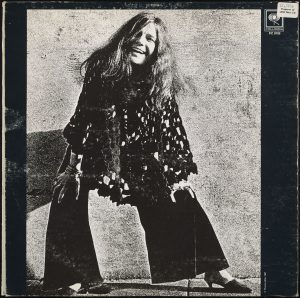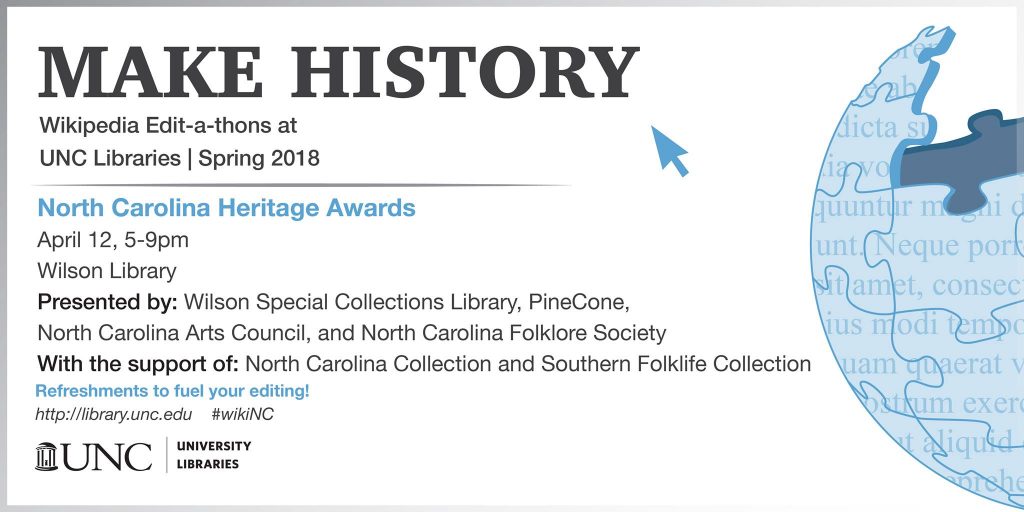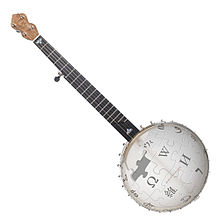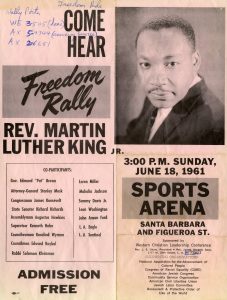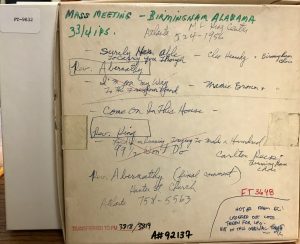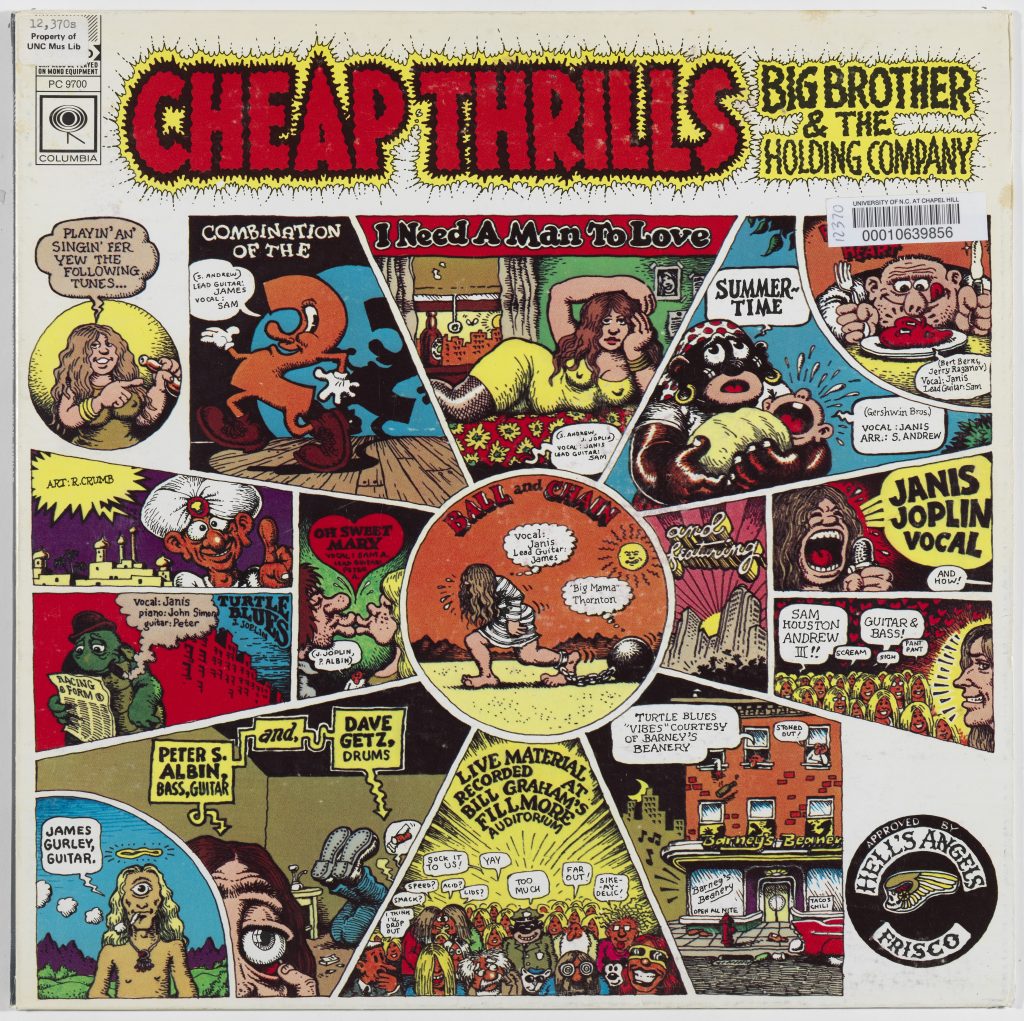
Cheap Thrills, Big Brother and the Holding Company (Columbia, August 1968)
Following their show-stopping performance at the 1967 Monterey Pop Festival, Big Brother and the Holding Company’s Cheap Thrills was one of 1968’s most eagerly anticipated albums. The San Francisco band featured the raw ecstatic vocals of Janis Joplin, a 24-year old from Port Arthur, Texas who had deeply absorbed blues influences and traditions while singing in clubs in Houston and Austin. Cheap Thrills topped the album charts for eight weeks, featuring songs “Piece of My Heart” (U.S. #12) and “Ball and Chain.” The album also featured cover art by underground cartoonist Robert Crumb, founder of Zap Comix.
Aaron
Sounds of '68: Electric Ladyland
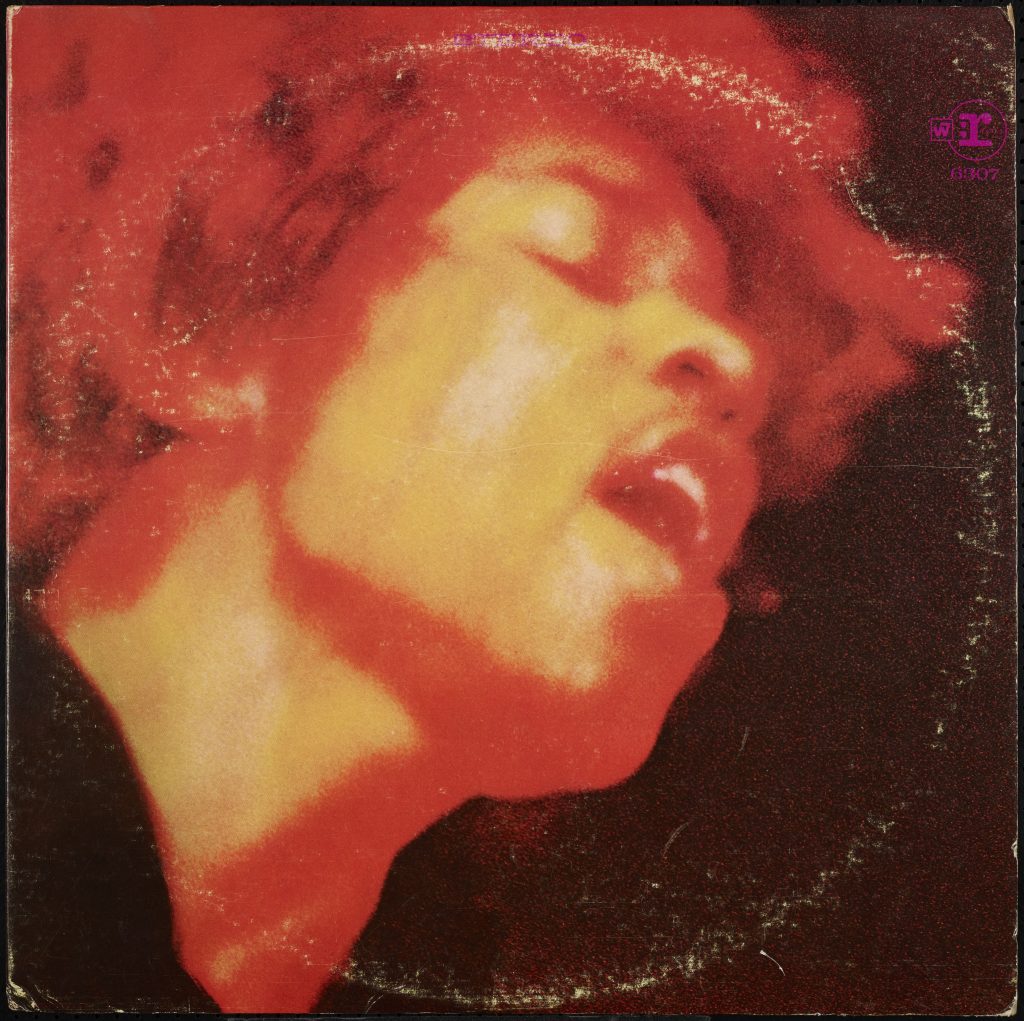
Electric Lady Land, The Jimi Hendrix Experience, Released on Reprise, August 1968
Electric Ladyland, the Experience’s third and final album, marked a new direction as Jimi took took greater control. Sessions held in London’s Olympic Studios and the Record Plant in New York City were looser, more jam oriented, and took on a party-like atmosphere, causing friction between Jimi and co-manager/producer Chas Chandler and bassist Noel Redding, ultimately leading to Chandler’s exit and the disintegration of the band. In addition to the two versions of Voodoo Chile, the sprawling 15-minute jam with Steve Winwood and Jack Cassidy, and the tighter pop Voodoo Chile (Slight Return), Ladyland is best known for Hendrix’s reinvention of Bob Dylan’s All Along the Watchtower (U.S. # 20), which Dylan performed in Jimi’s style thereafter.
[This item was on display during the Wilson Special Collections Library exhibition, “Sounds of ’68: Revolution in the Air,” January – April, 2018. Drawing from the deep holdings of UNC Libraries’s North Carolina Collection Photographic Archives, Music Library, and Southern Folklife Collection, The exhibit celebrates the recordings and the artists that defined an era.]
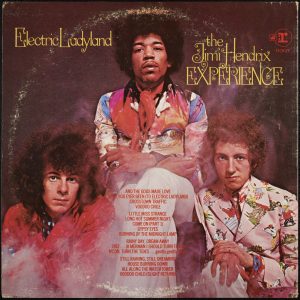
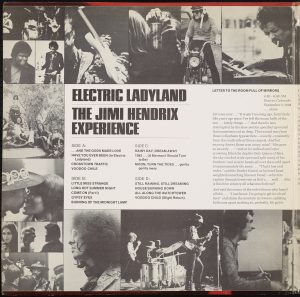
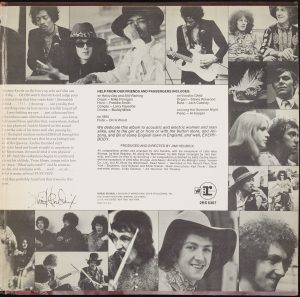
Sounds of '68 at Wilson Special Collections Library
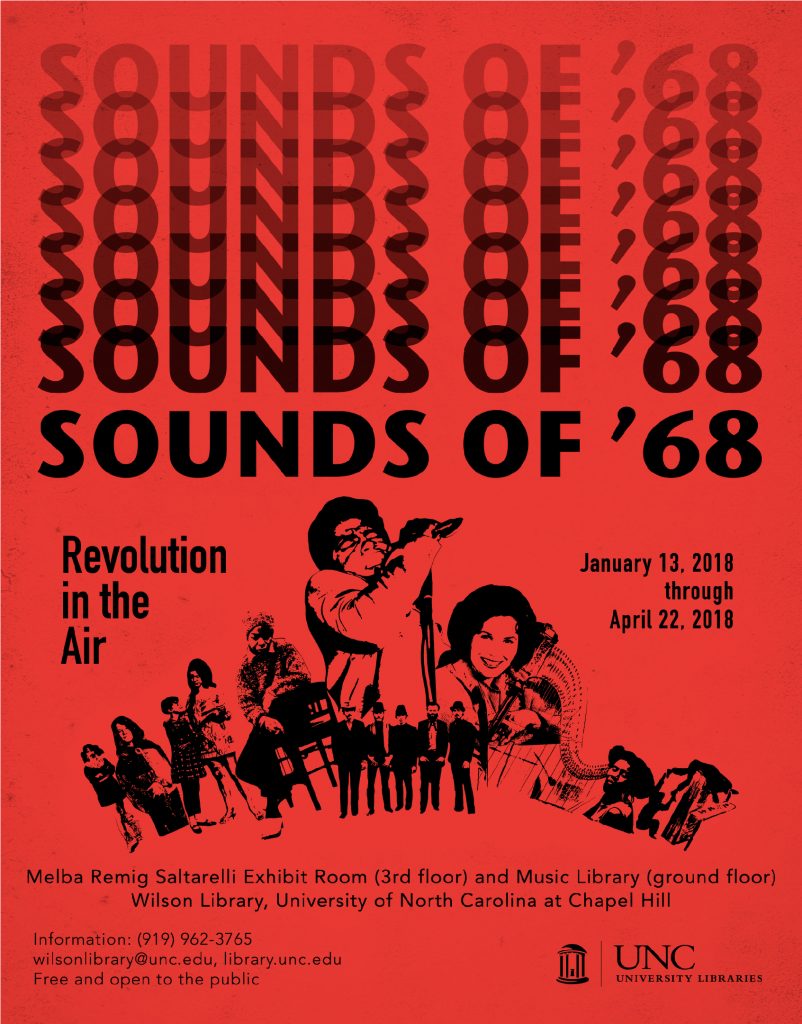 1968 was a year that reshaped American society and American music. It was the year that Marvin Gaye heard it through the grapevine, Janis Joplin gave away another piece of her heart, James Taylor went to Carolina in his mind, and Johnny Cash recorded a landmark concert at Folsom Prison.
1968 was a year that reshaped American society and American music. It was the year that Marvin Gaye heard it through the grapevine, Janis Joplin gave away another piece of her heart, James Taylor went to Carolina in his mind, and Johnny Cash recorded a landmark concert at Folsom Prison.
The musical legacy of that year was the topic of an exhibition at UNC’s Wilson Library earlier this year. “Sounds of ’68: Revolution in the Air” draws from the deep holdings of UNC Libraries’s North Carolina Collection Photographic Archives, Music Library, and Southern Folklife Collection. It celebrates the recordings and the artists that defined an era.
While the exhibit is no longer up, we thought we would use Field Trip South to offer a virtual exhibit experience.
of the album covers of classic LPs, reproductions of advertisements published in Billboard magazine and Cashbox, and rare photographs of artists such as Johnny Cash, Odetta, and Thelonious Monk during their North Carolina tours.
1968 was a highly charged year. A divisive presidential campaign, the Vietnam War and protests against it, and the assassinations of Martin Luther King, Jr. and Robert Kennedy all rocked the nation. The exhibition captures a musical scene that reflected deep changes in culture and society—from psychedelic blues to country, and from soul to musical theater and classical composition.
We’ll post a new album every week so check back next week. Up first, a pair of albums pushing blues into the outer limits, Electric Ladyland and Cheap Thrills.
Field recordings and Folklife
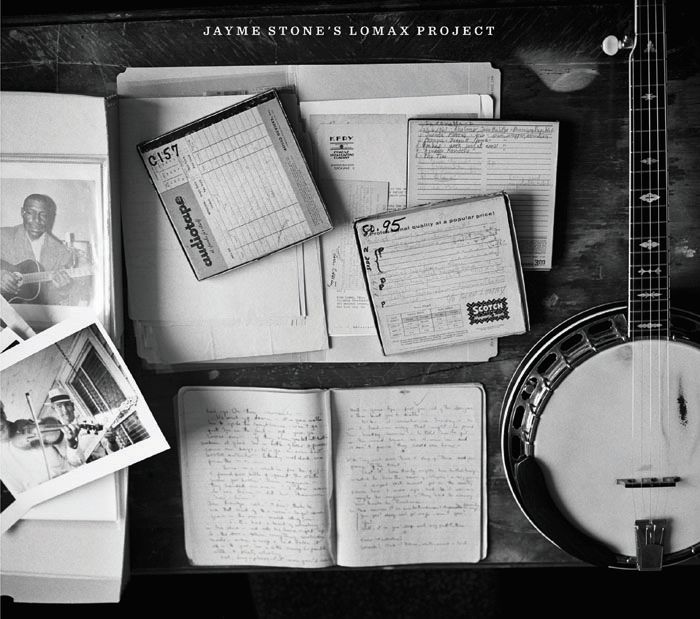
Our friends at The ArtsCenter in Carrboro are hosting banjo musician Jayme Stone and his Folklife Project on Friday, April 27. Continuing the practice from 2014’s Lomax Project, CD-15287 in the Southern Folklife Collection, Stone and his collaborators continue to look to recordings made by folklorists and field recorders for songs to reimagine. While Alan Lomax made recordings across the globe, opening up the source material allows for Stone to explore the work of other folklorists and song collectors, presenting that work to new listeners.
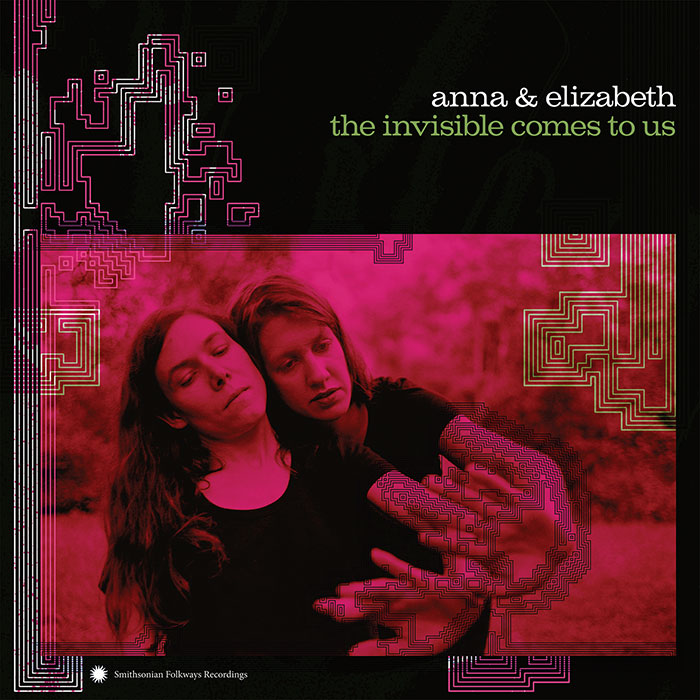 The Smithsonian Folkways recording artists Anna & Elizabeth have also looked to archival recordings for source material, and during a recent performance at Chapel Hill’s Nightlight, the duo performed along with a field recording of Margaret Shipman singing “Jeanno and Jeanette” recorded by Helen Hartness Flanders, a folklorist from Vermont whose collection is at Middlebury College Davis Family Library. The Flanders collection is digitized and you can hear her recordings of Margaret Shipman streaming online via the Internet Archive
The Smithsonian Folkways recording artists Anna & Elizabeth have also looked to archival recordings for source material, and during a recent performance at Chapel Hill’s Nightlight, the duo performed along with a field recording of Margaret Shipman singing “Jeanno and Jeanette” recorded by Helen Hartness Flanders, a folklorist from Vermont whose collection is at Middlebury College Davis Family Library. The Flanders collection is digitized and you can hear her recordings of Margaret Shipman streaming online via the Internet Archive
The Southern Folklife Collection is the repository for thousands of field recordings and many of these stream online thanks to the Audiovisual Preservation and Access Team and grant support from the Andrew W. Mellon Foundation. I hope these recordings can inspire artists to create new and reassembled works as well. Remember that Wilson Library does offer fellowships!
There are well over 20,000 streaming audio recordings streaming online through the Southern Folklife Collection finding aids. Field recordings are made in the field, taking the listener to a specific time and place. With that in mind I selected a few recordings made in North Carolina. Be sure you click through to the streaming file to listen.
- For some old time inspiration, the Paul Brown Collection (20382) includes many recordings made at the home of fiddler Benton Flippen. Audio cassette FS-6582 was recorded 22 October 1980 along with Paul Brown and Paul Sutphin.
- For some blues, the Joan Fenton Collection (20382) includes open reel tape recordings she made of Howard Cotten, bluesman and storyteller from Goldston, NC. Audiotape FT-0891 was made 6 August 1976 and includes Mr. Cotten performing the Piedmont blues classic “Step it Up and Go” as well as sharing memories about Blind Boy Fuller.
- Field recordings in the Artus Moser Papers (20005) were made on instantaneous discs. Listening through some of those recordings recently, I fixed on disc FD-0705. Songs on the recording, including a driving and lightly swinging version of “John Henry.” are performed by an unidentified female singer, recorded to instantaneous disc by Artus Moser in the 1930s.
If you are interested in other field recordings in the Southern Folklife Collection and Wilson Library, contact us anytime! And remember you can hear Jayme Stone’s Folklife interpret field recordings at The ArtsCenter this Friday.
NC Heritage Award Wikipedia Edit-a-thon, Thursday April 12
WHEN: Thursday, April 12, from 5:00 to 9:00 p.m. Come when you can, stay as long as you would like.
- Please arrive at 5:00 pm if you’d like to attend the Wikipedia basics workshop.
WHERE: Wilson Library, Room 504, on the University of North Carolina at Chapel Hill campus.
WHO: Anyone!
- Experienced or new Wikipedians (We’ll provide assistance with Wikipedia formatting and syntax.).
- Amateur historians or research pros (We’ll have library materials on hand to help with research).
- UNC faculty, staff, and students.
WHAT TO BRING: A laptop. We’ll help you access the University’s wireless network.
WHAT TO KNOW BEFORE YOU ARRIVE:
- Enter Wilson Library through the main entrance.
- There are several parking options within a few blocks of Wilson Library, including the Rams Head Parking Deck (330 Ridge Road), Cobb Deck (on Paul Green Drive) and metered parking along South Road and Country Club Road. Please see the Department of Public Safety’s Map of Visitor and Metered Parking for a complete list of visitor parking on UNC’s campus.
- For information about disability parking, see the Wilson Library website.
WILL THERE BE FOOD? Yes! We’ll have pizza, a few salad options, and soft drinks for participants.
WILL THERE BE FREE STUFF? Yes! We’ll have North Carolina-themed posters. We’ll also have a button-maker on hand for making your own buttons.
WILL THERE BE PRIZES? Yes again! During the event we’ll raffle off prizes related to our theme of traditional North Carolina artists.
Remembering Cecil Taylor
 Pulled a few favorites by the great Cecil Taylor today in honor of the artist’s passing. Taylor was incredibly prolific, but for the briefest of surveys of his music the three albums pictured above might be a place to start.
Pulled a few favorites by the great Cecil Taylor today in honor of the artist’s passing. Taylor was incredibly prolific, but for the briefest of surveys of his music the three albums pictured above might be a place to start.
The Cecil Taylor Quartet, looking ahead! (Contemporary Records, 1958), was recorded in the Nola Penthouse Studios in New York City, June 9, 1958 and features Earl Griffith on the vibra-harp, Buell Neidlinger on bass, and Dennis Charles on drums. Working as the leader of a quartet, Taylor stretches the tonal, melodic, and rhythmic structure of the pieces and his collaborators. The second album, Embraced (Pablo, 1977), recorded live in New York City is a collaboration between Taylor and one of his influences and another pioneer of the avant-garde, Mary Lou Williams. The two artists take the listener through the history of jazz, from spirituals and ragtime through boogie, bop, blues, and beyond into the future. Finally, For Olim (Soul Note, 1987), a solo album recorded April 9, 1986 at “Workshop Freie Music 1986” in Berlin, a collection of works that demonstrate the full range of Taylor’s compositional and performance skills, challenging and thrilling listening.
You can hear clips on our instagram, @sfolklife. You may also want to tune into the 24 hour memorial broadcast on WKCR that will extend through Sunday, April 8 at 8PM.
Martin Luther King, Jr. speaking from Birmingham, 1963
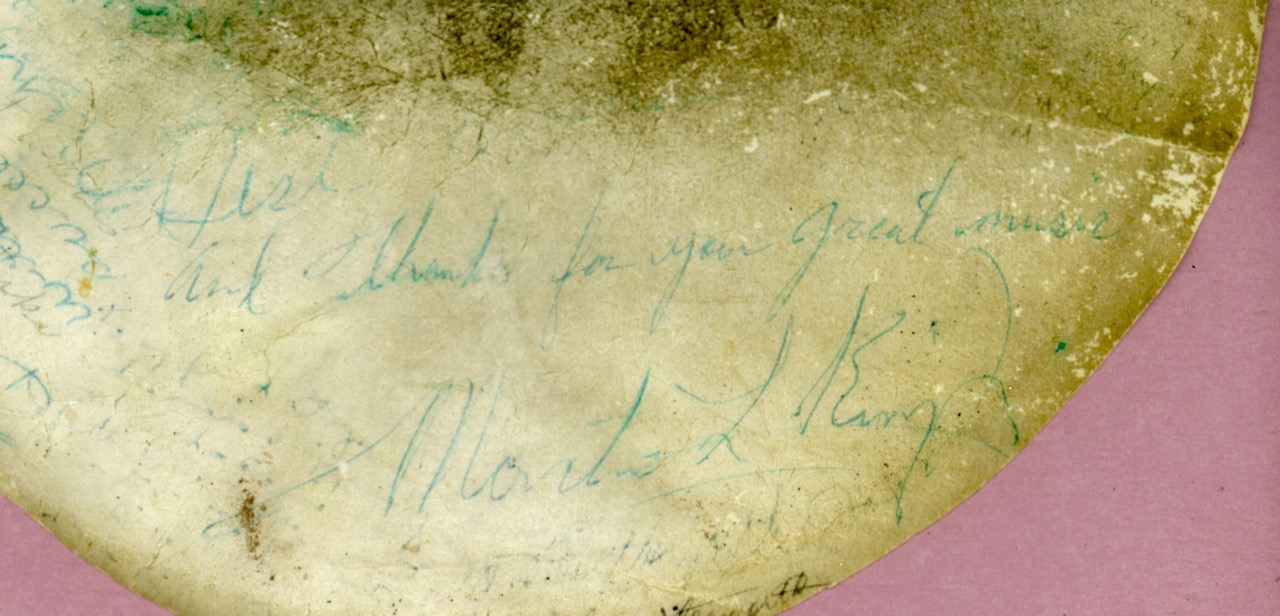 Like many of you today, we remember Dr. Martin Luther King, Jr. and his legacy by turning to his own voice and words. In that spirit we’d like to share a clip of a speech Dr. King made to a group of organizers and activists at a Mass Meeting in Birmingham, Alabama, April 1963, digitized from open reel tape recording FT-20008/9832 in the Guy and Candie Carawan Collection (20008). He addresses the audience with seriousness and humor, inspiring them to continue to fight for the cause and lifting them up in solidarity before they all join together to sing “We Shall Overcome”. Listen to those clips here or read the transcription below:
Like many of you today, we remember Dr. Martin Luther King, Jr. and his legacy by turning to his own voice and words. In that spirit we’d like to share a clip of a speech Dr. King made to a group of organizers and activists at a Mass Meeting in Birmingham, Alabama, April 1963, digitized from open reel tape recording FT-20008/9832 in the Guy and Candie Carawan Collection (20008). He addresses the audience with seriousness and humor, inspiring them to continue to fight for the cause and lifting them up in solidarity before they all join together to sing “We Shall Overcome”. Listen to those clips here or read the transcription below:
[Speaking: Rev. Charles Billups]:
Now let us join hands and let us sing together, “We Shall Overcome”
[singing]
We shall overcome
We shall overcome
We shall overcome someday,
Oh deep in my heart
I do believe
We shall overcome someday.
You can hear the entire tape, as well as interviews and comments from participating student actives, streaming through the Southern Folklife Collections digital collections here: FT-20008/9832. Digitized recordings in the Guy and Candie Carawan Collection have been made accessible through streaming thanks to SFC’s ongoing audiovisual preservation grant from the Andrew W. Mellon Foundation.
The photo above is a closeup of Guy Carawan’s banjo head (pictured in full below), signed by Martin Luther King, Jr. as well as other leaders like Rosa Parks, Mahalia Jackson, Septima Clark, Fred Shuttlesworth and more. If you are interested in other archival materials related to Martin Luther King, Jr. you may want to read an article from today’s News and Observer, April 4, 2018, “Martin Luther King, Jr. and Chapel Hill’s Jim Crow Past,” by journalist Mike Ongle. The article based on research across the collections at Wilson Special Collections Library and details Martin Luther King’s visit to Chapel Hill and UNC Chapel Hill in May of 1960, including photos from the John Kenyon Chapman Papers (05441) .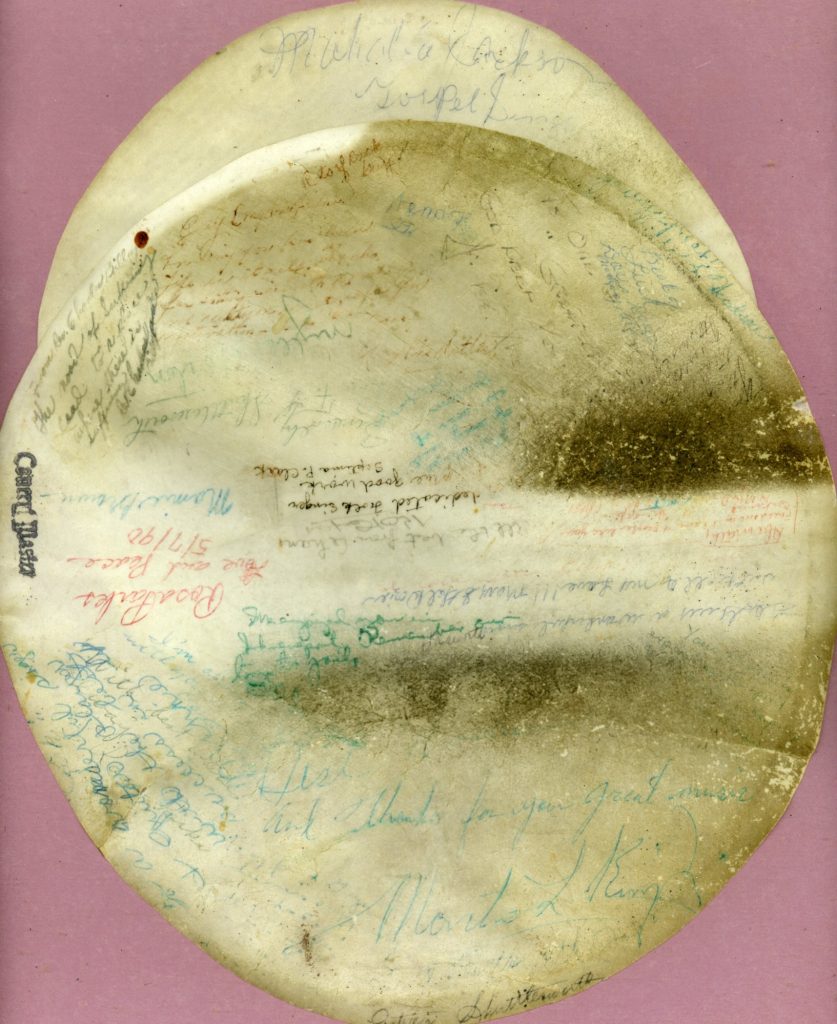
Documenting the origins of SNCC in the Guy and Candie Carawan Collection

Our colleagues at Duke University are hosting a conference March 23-March 24 to honor the work of the Student Nonviolent Coordinating Committee and the creation of the SNCC Digital Gateway, a “documentary website tells the story of how young activists in SNCC united with local people in the Deep South to build a grassroots movement for change that empowered the Black community and transformed the nation.” [“About,” SNCC Digital Gateway]
In solidarity with the conference and the SNCC Legacy Project, we present these two images from the Guy and Candie Carawan Collection (20008). The top image shows the back of Guy Carawan singing to the audience in an auditorium at Shaw University in Durham, April 1960. Brought together by the encouragement of SCLC Executive Director Ella Baker and Dr. Martin Luther King, Jr., the protest leaders founded SNCC at this meeting.
The image below shows the members of newly founded SNCC demonstrating the power of music and the movement at Fisk University. Guy Carawan is playing guitar, Candie Carawan is second from the left in the back row, and Congressman John Lewis is at the far right. These images serve as a powerful reminder that youth have been, and remain, at the forefront of activism advocating for social change.
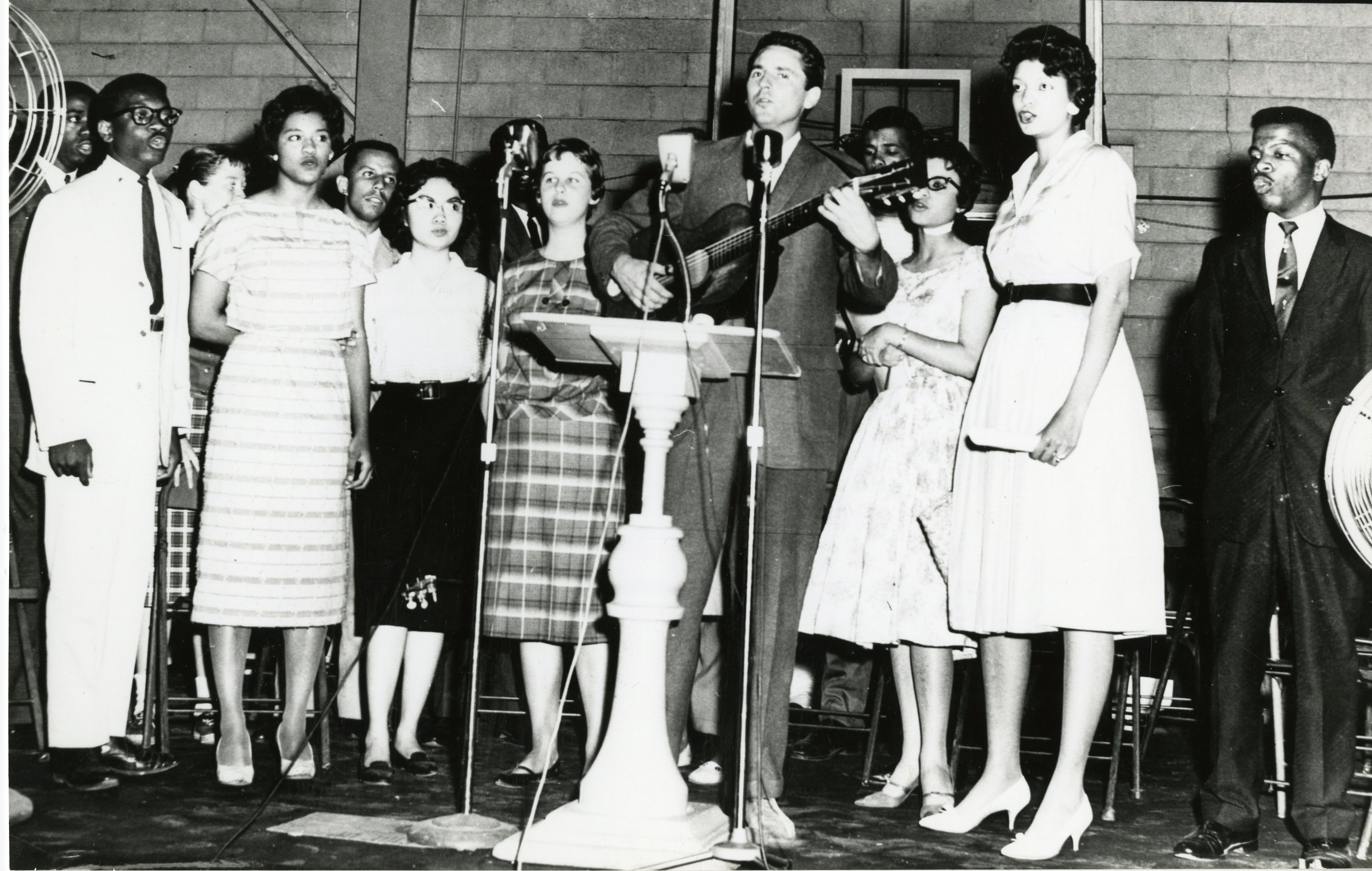
Cats of the SFC

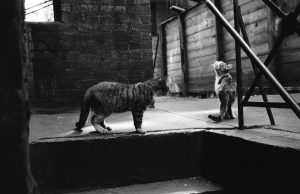
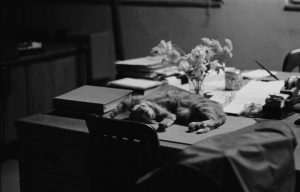
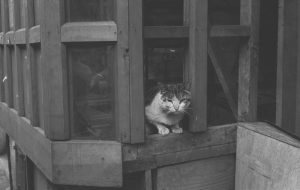
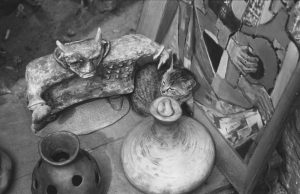
 One of my favorite parts about digitizing photographers’ collections or searching through stacks of photos to find something specific is finding the rare photo that seems out of context but says a lot about the person who captured it. Oftentimes I see photo after photo of performers and performances and famous artists, but sometimes a photo of a pet or a flower or a road sign finds its way into the mix. It’s a fun reminder that the photographers, while focusing on their work, still let a little bit of their personality shine through in ways other than their shooting style. In the Ronald D. Cohen Collection, I noticed a bunch of photos of cats sprinkled throughout images of the folk revival movement in and around New York City in the 60’s, and I thought it was only fair to give them a spotlight since the photographers clearly thought they were worth the film. The cat photos, of which the ones you see here are but a few, are mostly captured by Aaron Rennert, with some additional shots from Ray Sullivan. They were documenting the folk scene in Greenwich Village for Caravan magazine, and I think these cats exemplify the spirit they were trying to capture. Continue reading “Cats of the SFC”
One of my favorite parts about digitizing photographers’ collections or searching through stacks of photos to find something specific is finding the rare photo that seems out of context but says a lot about the person who captured it. Oftentimes I see photo after photo of performers and performances and famous artists, but sometimes a photo of a pet or a flower or a road sign finds its way into the mix. It’s a fun reminder that the photographers, while focusing on their work, still let a little bit of their personality shine through in ways other than their shooting style. In the Ronald D. Cohen Collection, I noticed a bunch of photos of cats sprinkled throughout images of the folk revival movement in and around New York City in the 60’s, and I thought it was only fair to give them a spotlight since the photographers clearly thought they were worth the film. The cat photos, of which the ones you see here are but a few, are mostly captured by Aaron Rennert, with some additional shots from Ray Sullivan. They were documenting the folk scene in Greenwich Village for Caravan magazine, and I think these cats exemplify the spirit they were trying to capture. Continue reading “Cats of the SFC”
Clifton Chenier, King of Zydeco

Here’s a photo I came across while musing through the John Edwards Memorial Foundation Records Collection: Clifton Chenier with his accordion. Clifton was a prominent zydeco artist from Opelousas, Louisiana, known as the “King of Zydeco,” and sometimes billed as “King of the South.” He was born in 1925 and lived to be 62 years old. He began his recording career in 1954 when he signed with Elko Records, and went on to sign with Chess Records and Arhoolie, for which the above is a publicity photo. Clifton won a Grammy in 1983 for his album, I’m Here, and was the second Louisiana Creole to do so, following Queen Ida. He was well-known for his accordion playing and was inducted into the Blues Hall of Fame posthumously in 1989, and The Louisiana Music Hall of Fame in 2011. Check out some video of him performing!

